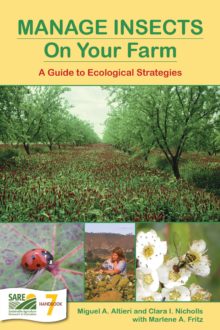Enhancing Aboveground Biodiversity: A Checklist For Farmers
- Diversify enterprises by including more species of crops and livestock.
- Use legume-based crop rotations and mixed pastures.
- Intercrop or strip-crop annual crops where feasible.
- Mix varieties of the same crop.
- Use varieties that carry many genes—rather than just one or two—for tolerating a particular insect or disease.
- Emphasize open-pollinated crops over hybrids for their adaptability to local environments and greater genetic diversity.
- Grow cover crops in orchards, vineyards and crop fields.
- Leave strips of wild vegetation at field edges.
- Provide corridors for wildlife and beneficial insects.
- Practice agroforestry: where possible, combine trees or shrubs with crops or livestock to improve habitat continuity for natural enemies.
- Plant microclimate-modifying trees and native plants as windbreaks or hedgerows.
- Provide a source of water for birds and insects.
- Leave areas of the farm untouched as habitat for plant and animal diversity.
(see Chapter 4 to learn about enhancing belowground biodiversity)
